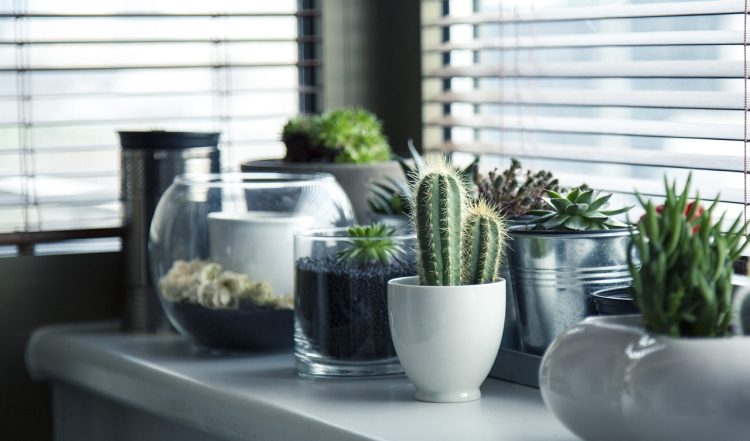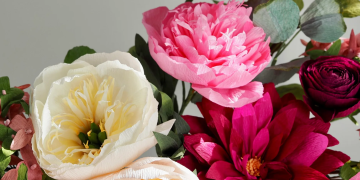Indoor plants bring life, color, and a sense of tranquility to your home, transforming your living space into a lush, green oasis. They not only enhance the aesthetic appeal of your surroundings but also improve indoor air quality and create a calming atmosphere. While indoor plants are generally easy to care for, understanding their specific needs is crucial to keeping them healthy and thriving. This guide provides essential tips on how to care for your indoor plants, helping you create an environment where they can flourish.
Choosing the Right Indoor Plants
The first step in caring for your indoor plants is choosing the right plants for your space and lifestyle. Not all plants are suited for indoor conditions, and different plants have different needs in terms of light, humidity, and care. Some of the best indoor plants for beginners include pothos, spider plants, snake plants, and peace lilies, as they are low-maintenance and can tolerate a variety of conditions.
If you’re looking for a plant that purifies the air, consider options like the rubber plant, Boston fern, or Chinese evergreen. For those who have limited natural light, plants like the ZZ plant or cast iron plant are excellent choices, as they can thrive in low-light conditions. Be sure to research the specific needs of each plant before bringing it into your home to ensure it will thrive in your indoor environment.
Providing Adequate Light
Light is one of the most important factors for indoor plant care. Different plants have different light requirements, so it’s important to place your plants in the right spot to meet their needs. Most indoor plants fall into one of three categories: low light, medium light, or bright light.
- Low Light: Plants like snake plants, ZZ plants, and peace lilies can tolerate low light conditions, making them ideal for rooms with minimal natural light.
- Medium Light: Plants such as philodendrons, pothos, and dracaenas thrive in medium light. They should be placed near a window that receives indirect sunlight.
- Bright Light: Succulents, cacti, and fiddle leaf figs need bright, direct sunlight to grow well. Place these plants near a south-facing window where they can receive plenty of light throughout the day.
If your home doesn’t have enough natural light, consider using grow lights to supplement. LED grow lights are energy-efficient and can provide the spectrum of light that plants need to thrive. Be mindful not to move plants around too frequently, as they can become stressed by changes in light conditions.
Watering Your Indoor Plants
Watering is one of the most common challenges when it comes to indoor plant care. Overwatering is the leading cause of plant death, as it can lead to root rot and other issues. To avoid overwatering, always check the soil before watering. Stick your finger about an inch into the soil—if it feels dry, it’s time to water. If the soil still feels moist, wait a few more days.
Different plants have different water requirements. Succulents and cacti, for example, prefer to dry out completely between waterings, while ferns and peace lilies like consistently moist soil. Always use pots with drainage holes to prevent water from sitting at the bottom, which can lead to root rot. If your pot doesn’t have drainage holes, consider using a liner pot that you can remove when watering.
When watering, use room-temperature water and avoid getting water on the leaves, as this can lead to fungal problems. Water thoroughly until you see water draining from the bottom of the pot, then empty the saucer to prevent the roots from sitting in water.
Maintaining Proper Humidity
Indoor plants, especially tropical varieties, thrive in environments with higher humidity. During the winter months, indoor air can become quite dry due to heating systems, which can stress your plants. To increase humidity, consider using a humidifier in the room where your plants are located. Alternatively, you can group plants together, as they will create a microclimate with higher humidity.
Misting the leaves of your plants can also help increase humidity, but be careful not to overdo it, as excessive moisture on the leaves can lead to fungal growth. Placing a tray filled with water and pebbles near your plants can also help—just make sure the bottom of the pots isn’t sitting directly in the water.
Fertilizing Your Indoor Plants
Indoor plants need nutrients to grow, and since they are confined to a pot, they rely on you to provide those nutrients. Fertilize your indoor plants every four to six weeks during the growing season (spring and summer) to support healthy growth. Use a balanced, water-soluble fertilizer at half the recommended strength to avoid over-fertilizing, which can damage the roots.
During the fall and winter months, most indoor plants enter a period of dormancy and do not require as much fertilizer. Reduce or stop fertilizing during these months to allow your plants to rest. Always follow the instructions on the fertilizer packaging, as different plants have different nutrient needs.
Pruning and Grooming Your Plants
Regular pruning is essential for keeping your indoor plants healthy and looking their best. Prune away any dead or yellowing leaves, as these can attract pests and take energy away from the plant. Use clean, sharp scissors or pruning shears to make clean cuts, which will help the plant heal more quickly.
Grooming your plants also involves cleaning the leaves. Dust can accumulate on the leaves of indoor plants, blocking light and hindering photosynthesis. Wipe the leaves with a damp cloth every few weeks to keep them clean and free of dust. For plants with delicate leaves, you can use a soft brush to gently remove dust.
Repotting Your Indoor Plants
As your plants grow, they may outgrow their pots and need to be repotted. Signs that your plant needs repotting include roots growing out of the drainage holes, slow growth, or the plant becoming top-heavy. Generally, indoor plants should be repotted every one to two years, depending on their growth rate.
When repotting, choose a pot that is one to two inches larger in diameter than the current pot. Gently remove the plant from its pot, being careful not to damage the roots. If the roots are tightly packed or circling the pot, gently loosen them before placing the plant in its new pot. Fill in with fresh potting mix and water thoroughly to help the plant settle into its new home.
Pest Control for Indoor Plants
Indoor plants can sometimes attract pests such as spider mites, aphids, and mealybugs. Regularly inspect your plants for signs of pests, such as webbing, sticky residue, or tiny insects on the leaves. If you notice pests, isolate the affected plant to prevent the infestation from spreading to other plants.
There are several natural ways to control pests on indoor plants. Insecticidal soap or neem oil can be used to treat infestations without harming the plant. You can also use a cotton swab dipped in rubbing alcohol to remove pests like mealybugs. Keeping your plants healthy and providing proper care will also make them less susceptible to pest problems.
Dealing with Common Indoor Plant Problems
Yellowing leaves, drooping, and brown leaf tips are common issues that indoor plant owners may encounter. Yellow leaves can be a sign of overwatering, underwatering, or nutrient deficiencies. Drooping leaves are often caused by a lack of water, while brown leaf tips can indicate low humidity or too much fertilizer.
To address these issues, assess the plant’s environment and care routine. Make sure you’re providing the right amount of water, light, and humidity for the specific plant. If you’re unsure of what’s causing the problem, try adjusting one factor at a time and observe how the plant responds.
Enjoying Your Indoor Garden
Caring for indoor plants is a rewarding experience that can bring beauty and a sense of tranquility to your home. By understanding the specific needs of your plants and providing the right conditions, you can create a thriving indoor garden that enhances your living space. Whether you’re growing a collection of lush tropical plants, a few succulents, or a mix of air-purifying houseplants, the care you provide will help your plants grow healthy and vibrant, bringing joy and greenery into your everyday life.










